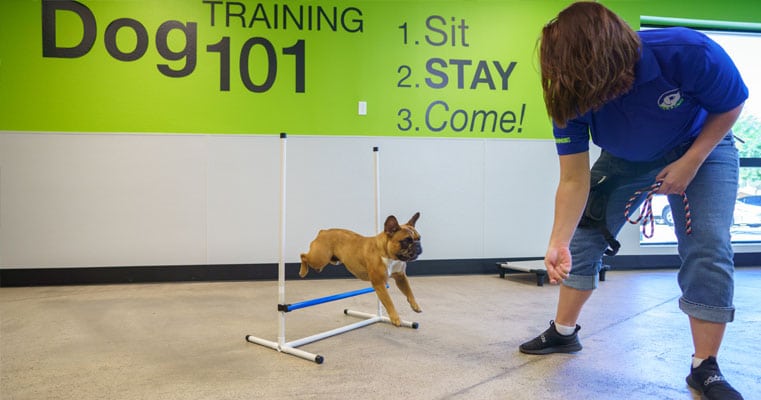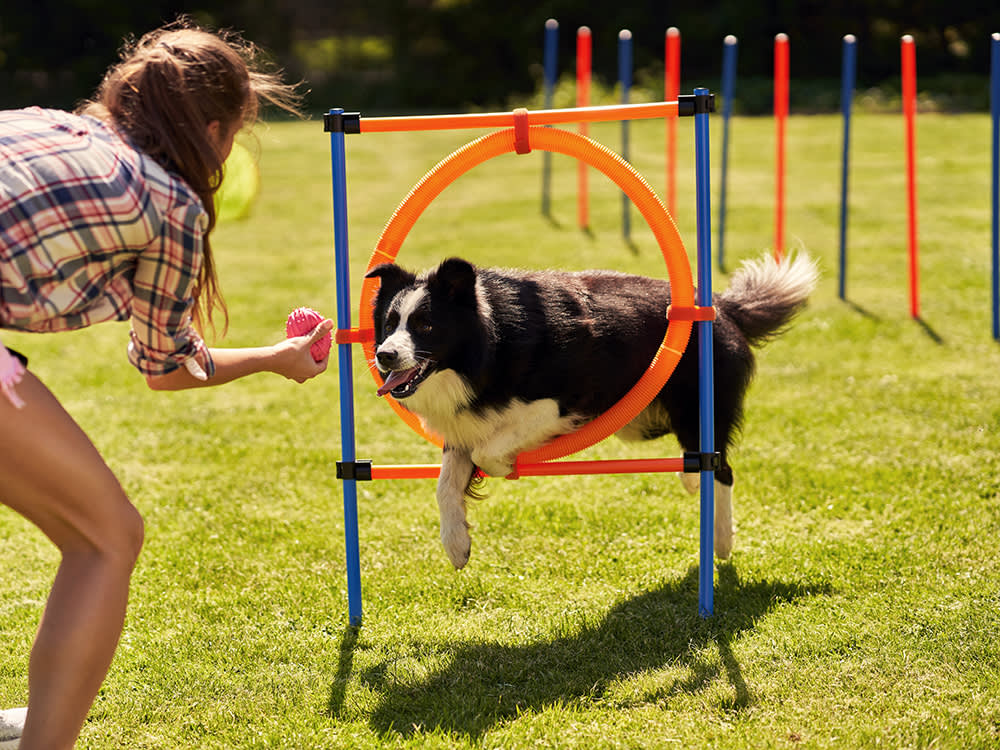Beginner's Overview to Effective Dog Training in the house
Effectively educating a dog in your home calls for a nuanced understanding of canine actions and reliable communication techniques. Developing clear training goals, making use of premium rewards, and preserving consistency throughout member of the family are important elements. In addition, integrating training right into day-to-day regimens can boost both engagement and retention. Lots of beginner fitness instructors experience challenges that might hinder progression. To navigate these complexities efficiently, it's necessary to check out numerous vital elements that can transform your approach and bring about a harmonious partnership with your family pet. What essential principles should every beginner understanding to guarantee success?
Comprehending Pet Dog Actions
Recognizing dog actions is vital for reliable training and promoting an unified partnership in between human beings and their canine friends. Pets interact primarily via body movement, articulations, and faces, making it vital for owners to interpret these signals precisely. Recognizing actions such as tail wagging, grumbling, or cowering can offer insights right into a dog's psychological state and intentions.

Common behavior concerns, such as hostility, anxiety, or excessive barking, frequently originate from misunderstandings or unmet requirements. Observing and dealing with these problems promptly can avoid acceleration and make certain a positive training experience. By fostering a deep understanding of pet habits, proprietors can tailor their training methods to suit their canine companions, ultimately resulting in a mannerly and contented animal.
Important Training Devices
A fully equipped training room can dramatically boost the efficiency of canine training in the house. Essential training tools make sure that both the pet and the fitness instructor can take part in effective sessions that promote discovering and bonding.

Buying a durable leash and a comfortable, well-fitting collar or harness is important for security and control. These tools help develop boundaries and make sure the canine remains safe throughout training. Furthermore, a marked training area, complimentary from interruptions, help concentration for both the canine and the fitness instructor.
Educating aids such as training pads, cones, or dexterity equipment can likewise enhance the experience by presenting variety and challenges. Last but not least, having a notebook or electronic app for tracking progression can be invaluable, enabling you to keep in mind successes and areas for improvement. Making use of these necessary tools will develop a favorable training atmosphere and lay the structure for effective understanding.
Creating a Training Routine
Developing a consistent training routine is essential for reliable pet training in your home. A well-structured regular not just assists in enhancing wanted habits but also supplies your pet with a complacency and predictability. To create an effective training regular, start by identifying certain training goals, such as basic commands, leash walking, or house-breaking.
Choose an assigned time every day for training sessions, ideally when your pet is responsive and alert. Procedure should be short, around 5 to 15 mins, to keep emphasis and stop tiredness. Consistency in timing and setting will enhance your pet's discovering experience.
Integrate training right into daily activities to strengthen skills. For example, practice commands during walks read this or mealtime, which incorporates learning right into all-natural regimens. Additionally, continue to be adaptable and adjust the routine as required, fitting your pet's power levels and mood.
Favorable Reinforcement Strategies
Favorable support methods are essential to effective dog training, promoting preferred actions with rewards rather than punishment. This approach makes use of positive stimuli, such as treats, appreciation, or playtime, to urge pet dogs to duplicate certain actions. The foundation of this technique is timing; incentives must be provided immediately following the wanted habits to develop a clear organization.
When applying positive support, it is important to pick benefits that are encouraging for your dog. High-value treats, such as little pieces of poultry or cheese, can be especially efficient throughout training sessions. Furthermore, differing the incentives can preserve your canine's interest and excitement.
Beginning with easy commands, like "rest" or "stay," and progressively progression to more intricate jobs. Consistency is crucial; make certain that all relative make use of the same commands and benefit systems to stay clear of complication.
Additionally, it is vital to continue to be client and prevent disappointment. Canines, like human beings, discover at their own pace. By promoting a supportive training setting with positive reinforcement, you can enhance your canine's learning experience while this contact form enhancing the bond between you and your fuzzy friend, laying the groundwork for successful training results.
Typical Training Obstacles
While training a dog in the house can be a rewarding experience, it commonly features a collection of common challenges that can examine both patience and uniformity. One widespread issue is distraction. Pets might come to be conveniently sidetracked by sounds, motions, or also scents in their setting, making it tough to preserve their focus during training sessions.
An additional challenge is inconsistency in commands and support. If member of the family make use of various hints or benefits, it can puzzle the dog and hinder progress. Developing a unified method is crucial for efficient interaction.
Additionally, pets can experience frustration or stress and anxiety, especially if they do not recognize what is anticipated of them. This can bring about unfavorable habits, such as chewing or barking.
Ultimately, the timing of reinforcement is critical (Dog training). Delayed incentives can diminish the efficiency of positive reinforcement, as dogs might fall short to attach the actions with the benefit
Conquering these difficulties requires dedication, clear interaction, and a structured training strategy. Acknowledging and addressing these usual challenges will certainly lead the way for a more satisfying and effective training experience in the house.
Verdict
Finally, effective canine training in your home demands a thorough understanding of canine behavior and effective interaction approaches. By developing clear training objectives and making use of top notch treats along with favorable support, the training process becomes a lot more fulfilling for both the canine and the fitness instructor. Uniformity, persistence, and flexibility are necessary elements that promote discovering. Eventually, incorporating training right into everyday routines boosts the bond in between pet dog and proprietor, making the experience both effective and satisfying.
Establishing more tips here a consistent training regimen is essential for effective canine training at home.Positive support techniques are fundamental to reliable canine training, advertising wanted actions through benefits instead than penalty (Dog training). By cultivating a supportive training environment through favorable reinforcement, you can improve your dog's discovering experience while reinforcing the bond in between you and your hairy buddy, laying the foundation for successful training results
In verdict, effective pet dog training at home necessitates a comprehensive understanding of canine habits and efficient communication approaches. By establishing clear training goals and using premium treats along with favorable support, the training procedure comes to be extra satisfying for both the instructor and the pet.